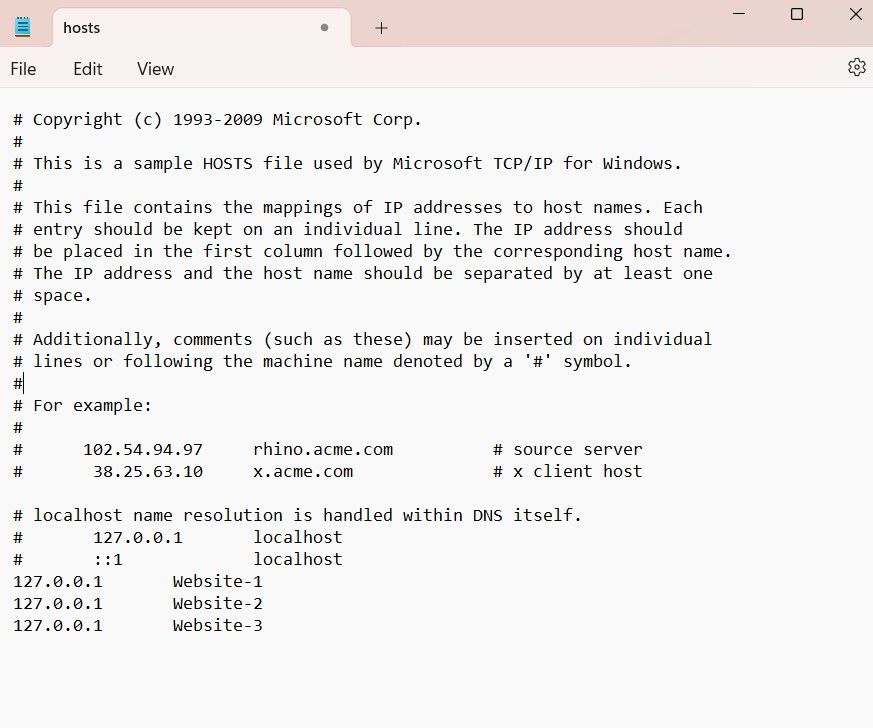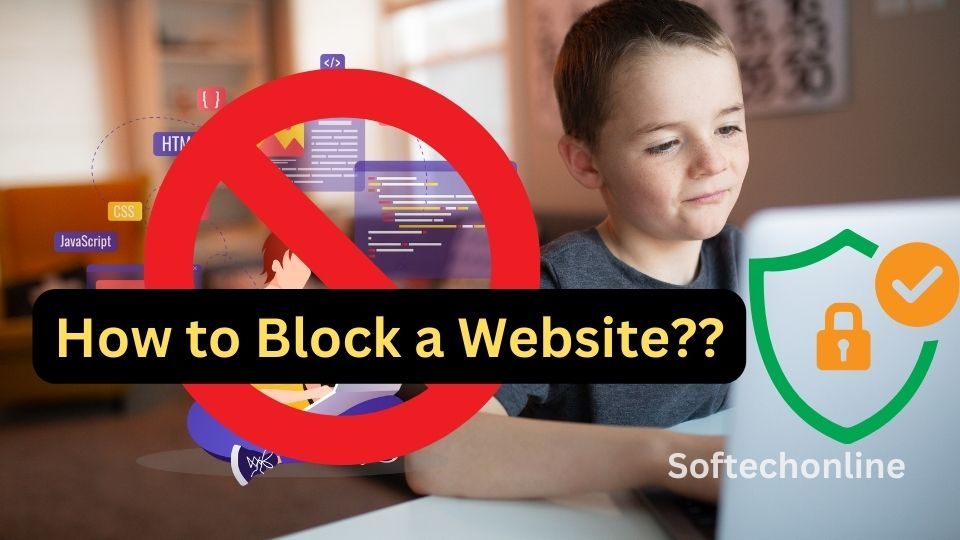How to Block a Website and Regain Your Focus:
Ever find yourself getting sucked into a time vortex on social media or a specific website? We’ve all been there! Fortunately, there are several ways to block distracting websites and reclaim control of your browsing experience. This guide explores various methods for blocking websites on different devices and browsers.
Why Block Websites?
There are many reasons why you might want to block a website. Here are a few common ones:
- Boost Productivity: Blocking distracting websites can help you stay focused on work or studies by minimizing temptations.
- Parental Control: Concerned about what your children see online? Blocking inappropriate websites can provide an extra layer of protection.
- Limit Screen Time: Website blocking can be a helpful tool for managing your overall screen time and promoting healthy browsing habits.
How to Block a Website (Methods for Different Devices):
On Your Computer:
There are multiple approaches to blocking websites on your computer, depending on your operating system and preferred browser. Here are some common methods:
Browser Extensions(how to block a website in chrome browser):
Many popular browser extensions specialize in website blocking. Some popular options include BlockSite, Freedom, and LeechBlock. These extensions typically offer user-friendly interfaces for creating blocklists and managing access times.
Host File Editing (Advanced Users):
This method involves modifying your computer’s host file to redirect blocked websites to a different location. While effective, it requires some technical knowledge and might not be suitable for beginners.
Here’s how you can do it:
Note: Modifying the host file requires administrative privileges and should be done with caution.
Locate the Hosts File:
On Windows:
Open File Explorer and navigate to C:\Windows\System32\drivers\etc.
Look for a file named hosts. It might not have an extension.
On Mac:
Open Finder and go to Go > Go to Folder.
Enter /private/etc/ and click Go.
Find and open the hosts file.
Edit the Hosts File:
Right-click on the hosts file and select “Open with” then choose a text editor like Notepad (Windows) or TextEdit (Mac).
At the bottom of the file, add the following line:

Replace “Website-1, 2, 3 ” with the URL of the website you want to block.
After adding the line, save the changes to the hosts file.
Flush DNS Cache (Optional):
- To ensure the changes take effect immediately, you can flush the DNS cache.
- On Windows, open Command Prompt as an administrator and type ipconfig /flushdns.
- On Mac, open Terminal and type sudo killall -HUP mDNSResponder.
Verify the Block:
Open a web browser and try to access the blocked website (example.com). It should display an error message or fail to load.
Watch Video
Parental Controls (Windows & Mac):
Built-in parental control features on Windows and Mac operating systems allow you to restrict website access for specific user accounts.
On Your Mobile Device:
Parental Controls (iOS & Android):
Similar to computers, both iOS and Android offer built-in parental control features that can be used to block websites on smartphones and tablets.
App-Based Blocking:
There are several mobile apps available that specifically focus on website blocking. These apps often provide additional features like scheduling and password protection.
Choosing the Right Blocking Method:
The best method for blocking a website depends on your technical comfort level, device, and desired level of control. Here’s a quick guide:
- For Beginners: Browser extensions are a user-friendly and convenient option.
- For Advanced Users: Host file editing allows for granular control but requires technical expertise.
- For Parental Control: Built-in parental controls on your device offer a comprehensive solution for managing website access.
| Method | Pros | Cons |
|---|---|---|
| Browser Extensions | – User-friendly interfaces | – Limited to specific browsers |
| – Easy to install and configure | – May slow down browser performance | |
| – Allow creation of blocklists and management of access times | – Some features may be limited in free versions | |
| Host File Editing (Advanced Users) | – Effective at blocking websites | – Requires technical knowledge |
| – Granular control over blocked sites | – Not suitable for beginners | |
| – No need for additional software | – Risk of causing system errors if host file is edited incorrectly | |
| Parental Controls (Windows & Mac) | – Built-in feature on Windows and Mac operating systems | – Limited to specific devices and operating systems |
| – Comprehensive solution for managing website access | – May require administrative privileges to configure | |
| – Can restrict access for specific user accounts | ||
| Parental Controls (iOS & Android) | – Built-in feature on iOS and Android devices | – Limited to specific devices and operating systems |
| – Offers parental control options tailored for mobile devices | – May not provide as much granularity or flexibility as other methods | |
| – Can block websites and set usage limits | ||
| App-Based Blocking | – Specialized apps offer additional features like scheduling and password protection | – Requires downloading and installing additional software |
| – Can be used across multiple devices | – Some apps may require a subscription or purchase | |
| – Easy to use interface | – Apps may access personal data, raising privacy concerns |
Additional Tips:
- Password Protection: Consider adding password protection to your blocking method to prevent others from easily disabling it.
- Schedule Blocking: Some methods allow you to schedule website blocking for specific times of day, minimizing distractions during work or study hours.
- Alternative Activities: When you’re tempted to visit a blocked website, have alternative activities planned to maintain focus and productivity.
Frequently asked Questions:
Q:how to block a website in chrome?
A: This is the most user-friendly option and offers more control over what gets blocked. Here’s how to do it:
- Visit the Chrome Web Store: Open Chrome and navigate to the Chrome Web Store by typing “https://chromewebstore.google.com/” in the address bar and pressing Enter.
- Search for a Website Blocker: In the search bar, type “website blocker” or “block site” and press Enter.
- Choose a Blocker Extension: Several options will appear. Popular choices include “BlockSite” or “WasteNoTime.” Look at reviews and ratings to choose one that suits you.
- Install the Extension: Click on the chosen extension and then click “Add to Chrome” to install it.
- Block Websites: Once installed, the extension will provide instructions on how to use it. Generally, you can access the extension’s settings and add the website URLs you want to block.
Q: Is blocking websites safe?
A: Blocking websites itself is a safe practice. However, the safety considerations lie in the method you choose. When using browser extensions, ensure they are downloaded from reputable sources. Avoid extensions with excessive permission requests or unclear functionalities.
Q: Can I block websites in incognito mode?
A: Browser extensions typically don’t work in incognito mode as this mode prioritizes privacy and avoids storing browsing data. However, some parental control features might extend to incognito browsing. Or use the Host Entry Method.
Q: What if I forget the password to my website blocking extension?
A: Most extensions offer password recovery options through your browser or the extension’s website. Refer to the extension’s documentation for specific instructions.
Q: Are there any downsides to website blocking?
A: While website blocking has many benefits, there are a few potential drawbacks to consider. Blocking a website you genuinely need for work or research might create inconveniences. Additionally, relying solely on website blocking might not address underlying issues with focus or procrastination.
Q: What are some alternative strategies for staying focused online?
A: Website blocking is a helpful tool, but it can be combined with other strategies. Techniques like the Pomodoro Technique (focused work intervals with short breaks) or using website timers can further enhance your productivity.
Conclusion:
By utilizing website blocking techniques, you can reclaim control of your browsing experience and minimize distractions. Choose the method that best suits your needs and device, and enjoy a more focused and productive online environment.
Read More Tech Stuff on Softech Online
